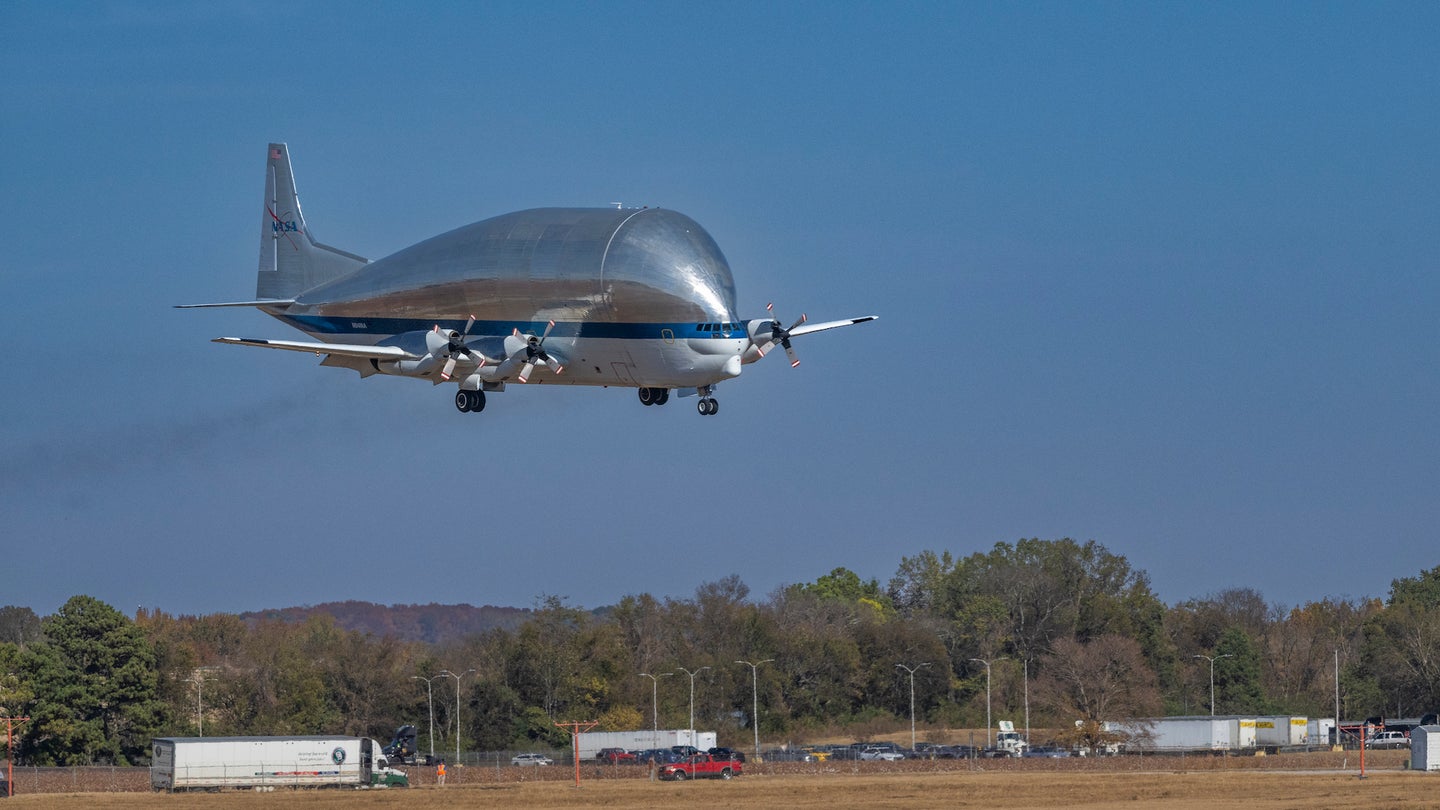Watch NASA’s bizarre and bulbous Super Guppy cargo plane touch down in Alabama
Although currently the last of its kind, the line of chonky boys has long played a vital role in spacecraft logistics.

After over half a century of loyal service, the world’s last remaining Super Guppy aircraft continues to dutifully transport NASA’s gigantic rocket parts in its cavernous, hinged cargo bay. On Tuesday, the Huntsville International Airport posted a video and accompanying images to social media of the rotund plane arriving from Kennedy Space Center. Perhaps somewhat unsurprisingly, it sounds like a prop plane of that size can make a huge, rich racket on the tarmac.
[Related: Artemis II lunar mission goals, explained.]
Aboard the over 50-ton (when empty), turboprop plane this time around was the heat shield that protected last year’s Artemis I Orion spacecraft. The vital rocketry component capable of withstanding 5,000 degrees Fahrenheit resided in the Super Guppy’s 25-foot tall, 25-foot wide, 111-foot long interior during a nearly 690-mile journey to the Alabama airport, after which it was transported a few miles down the road to the Marshall Space Flight Center. From there, a team of technicians will employ a specialized milling tool to remove the heat shield’s protective Avcoat outer layer for routine post-flight analysis, according to NASA.
The Super Guppy is actually the third Guppy iteration to lumber through the clouds. Based on a converted Boeing Stratotanker refueling tanker and designed by the now defunct Aero Spacelines during the 1960s, an original craft called the Pregnant Guppy was supplanted by its larger Super Guppy heir just a few years later. This updated plane included an expanded cargo bay, alongside an incredibly unique side hinge that allows its forward section to open like a pocket watch. A final Super Guppy Turbine debuted in 1970, and remained in use by NASA for over 25 years. In 1997, the agency purchased one of two newer Super Guppy Turbines built by Airbus. This Guppy is the current and only such hefty boy gracing the skies. With its bulky profile, the Super Guppy’s travel specs are pretty impressive—it’s capable of flying as high as 25,000 feet at speeds as fast as 250 nautical miles per hour.
[Related: NASA’s weird giant airplane carried the future of Mars in its belly.]
Last PopSci checked in on the Super Guppy’s journeys was back in 2016, when it transported an Orion crew capsule potentially destined for a much further trip than the Artemis missions’ upcoming lunar sojourns—Mars. According to Digital Trends, the Super Guppy’s next flight could occur sometime next year ahead of NASA’s Artemis II human-piloted lunar flyby.
“Although much of the glory of America’s space program may be behind it, the Super Guppy continues to be one of the only practical options for oversized cargo and stands ready to encompass a bigger role in the future,” reads a portion of NASA’s official description.
Until then, feel free to peruse the official, 74-page Super Guppy Transport User’s Guide.